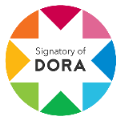Efecto de Colletotrichum falcatum en los parámetros productivos de caña de azúcar, revisión integral y estrategias de manejo
Resumen
La caña de azúcar (Saccharum spp.) es un cultivo estratégico para la producción de azúcar, bioetanol y energía, pero su rendimiento se ve severamente afectado por enfermedades como la podredumbre roja, causada por el hongo C. falcatum. Esta revisión integra evidencia científica reciente (2010-2024) sobre el impacto de C. falcatum en parámetros productivos, fisiológicos y económicos de la caña de azúcar, así como las estrategias de manejo disponibles.
Los estudios analizados demuestran que la enfermedad reduce el rendimiento en un 20-50% en variedades susceptibles, afectando la calidad del jugo con pérdidas de 15-25% en sacarosa y aumentando la fibra. Además, altera procesos fisiológicos clave, como la fotosíntesis (-40%) y el crecimiento de los tallos. Factores como humedad elevada (>80%) y temperaturas entre 25-30°C favorecen la proliferación del patógeno.
Entre las estrategias de control, destacan: El uso de variedades resistentes (ej., RB867515, Co 0238), aplicación de fungicidas (triazoles y estrobilurinas), aunque con riesgos de resistencia, prácticas culturales (rotación de cultivos y eliminación de residuos), y agentes de control biológico (Trichoderma harzianum).
Se identifican brechas críticas, como la necesidad de investigar mecanismos moleculares de infección y optimizar modelos de predicción basados en clima. La revisión concluye que un enfoque integrado, combinando resistencia genética, manejo agronómico y herramientas biotecnológicas, es esencial para mitigar las pérdidas económicas (estimadas en USD 500-1000/ha) y garantizar la sostenibilidad del cultivo.
Palabras clave
Referencias
Abbas, H., Anwar, S., Javed, N., Iqbal, & Abid, N. (2010). Morphological variability among isolates of Colletotrichum falcatum infecting four cultivars of sugarcane. Pakistan Journal of Phytopathology, 22, 101–104. Recuperado de https://www.pakps.com/pjp/downloads/2010/Volume-22-2/101-104.pdf
Ashwin, N., Barnabas, L., Sundar, A. R., Malathi, P., Viswanathan, R., Masi, A., Agrawal, G., & Rakwal, R. (2017). Comparative secretome analysis of Colletotrichum falcatum identifies a cerato-platanin protein (EPL1) as a potential pathogen-associated molecular pattern (PAMP). Journal of Proteomics, 169, 2–20. https://doi.org/10.1016/j.jprot.2017.05.020
Ashwin, N., Barnabas, L., Sundar, A. R., Malathi, P., Viswanathan, R., Masi, A., Agrawal, G., & Rakwal, R. (2018). CfPDIP1, a novel secreted protein of Colletotrichum falcatum, elicits defense responses in sugarcane. Applied Microbiology and Biotechnology, 102, 6001–6021. https://doi.org/10.1007/s00253-018-9009-2
Bharti, Y. P., Vishwakarma, S., Kumar, A., Singh, A., Sharma, M., & Shukla, D. (2012). Physiological and pathological aspects of some new isolates of Colletotrichum falcatum causing red rot disease in Saccharum spp. complex. Acta Phytopathologica Et Entomologica Hungarica, 47, 35–50. https://doi.org/10.1556/APHYT.47.2012.1.4
Chandra, A., Singh, D., Joshi, D., Pathak, A. D., Singh, R. K., & Kumar, S. (2021). A highly contiguous reference genome assembly for Colletotrichum falcatum pathotype Cf08 causing red rot disease in sugarcane. 3 Biotech, 11. https://doi.org/10.1007/s13205-021-02695-x
Chandra, A., Singh, D., Joshi, D., Pathak, A. D., Singh, R. K., & Kumar, S. (2021). A highly contiguous reference genome assembly for Colletotrichum falcatum pathotype Cf08. 3 Biotech, 11. https://doi.org/10.1007/s13205-021-02695-x
Chhabra, M. L., Parameswari, B., & Viswanathan, R. (2016). Pathogenic behaviour pattern of Colletotrichum falcatum isolates of sugarcane in sub-tropical India. Vegetos, 29, 76. https://doi.org/10.5958/2229-4473.2016.00103.8
Franco, F. P., Túler, A. C., Gallan, D. Z., Gonçalves, F. G., Favaris, A. P., Peñaflor, M., ... & Silva-Filho, M. (2022). Colletotrichum falcatum modulates the olfactory behavior of the sugarcane borer. FEMS Microbiology Ecology. https://doi.org/10.1093/femsec/fiac035
Franco, F. P., Túler, A. C., Gallan, D. Z., Gonçalves, F. G., Favaris, A. P., Peñaflor, M., Leal, W., Moura, D. S., Bento, J., & Silva-Filho, M. (2022). Colletotrichum falcatum modulates the olfactory behavior of the sugarcane borer, favoring pathogen infection. FEMS Microbiology Ecology. https://doi.org/10.1093/femsec/fiac035
Gujjar, R. S., Kumar, R., Goswami, S. K., Srivastava, S., & Kumar, S. (2023). MAPK signaling pathway orchestrates and fine-tunes the pathogenicity of Colletotrichum falcatum. Journal of Proteomics, 105056. https://doi.org/10.1016/j.jprot.2023.105056
Gujjar, R. S., Kumar, R., Goswami, S. K., Srivastava, S., & Upadhyay, A. (2024). Colletotrichum falcatum influences sucrose accumulation in sugarcane stalks by modulating the expression of SPS, SPP, SuSy, and invertases. Physiological and Molecular Plant Pathology. https://doi.org/10.1016/j.pmpp.2024.102237
Gujjar, R. S., Kumar, R., Goswami, S. K., Srivastava, S., & Upadhyay, A. (2024). Colletotrichum falcatum influences sucrose accumulation in sugarcane stalks by modulating the expression of SPS, SPP, SuSy, and invertases. Physiological and Molecular Plant Pathology. https://doi.org/10.1016/j.pmpp.2024.102237
Hossain, I., Ahmad, K., Siddiqui, Y., Saad, N., Rahman, Z., Haruna, A. O., & Bejo, S. (2020). Current and prospective strategies on detecting and managing Colletotrichum falcatum causing red rot of sugarcane. Agronomy, 10(9), 1253. https://doi.org/10.3390/agronomy10091253
Hossain, M. I., Ahmad, K., Vadamalai, G., Siddiqui, Y., Saad, N., Ahmed, O., ... & Kutawa, A. (2021). Phylogenetic analysis and genetic diversity of Colletotrichum falcatum isolates causing sugarcane red rot disease in Bangladesh. Biology, 10(9), 862. https://doi.org/10.3390/biology10090862
Kurian, J. A., & Jehani, M. D. (2023). A review on integrated disease management of red rot of sugarcane caused by Colletotrichum falcatum. Ecology, Environment and Conservation. https://doi.org/10.53550/eec.2023.v29i04.067
Malathi, P., Viswanathan, R., & Jothi, R. (2006). Specific adaptation of Colletotrichum falcatum pathotypes to sugarcane cultivars. Sugar Tech, 8, 54–58. https://doi.org/10.1007/BF02943742
Mohanraj, D., Padmanaban, P., & Karunakaran, M. (2004). Purification and partial characterization of a phytotoxin produced by Colletotrichum falcatum. Indian Phytopathology, 57(1), 65–67. Recuperado de https://epubs.icar.org.in/index.php/IPPJ/article/view/17624
Oliveira, G. P. (2020). Trichoderma spp. como potenciais agentes de controle biológico para podridão vermelha ocasionada por Colletotrichum falcatum. [Tesis doctoral, Universidade Federal de Uberlândia]. https://doi.org/10.14393/ufu.di.2020.116
Mohanraj, D., Padmanaban, P., & Karunakaran, M. (2004). Purification and partial characterization of a phytotoxin produced by Colletotrichum falcatum. Indian Phytopathology, 57(1), 65–67. Recuperado de https://epubs.icar.org.in/index.php/IPPJ/article/view/17624
Prasanth, C. N., Rasappa, V., Malathi, P., & Sundar, A. R. (2021). Transcriptome analysis of sugarcane in response to Colletotrichum falcatum infection reveals repertoire of transcription factors and host targets. Research Square. https://doi.org/10.21203/rs.3.rs-1075135/v1
Prasanth, C. N., Viswanathan, R., Krishna, N., Malathi, P., Sundar, A. R., & Tiwari, T. (2017). Gene expression profiling in Colletotrichum falcatum using transcriptomics. Sugar Tech, 19, 604–615. https://doi.org/10.1007/s12355-017-0529-3
Prasanth, C. N., Viswanathan, R., Krishna, N., Malathi, P., Sundar, A. R., & Tiwari, T. (2017). Unraveling the genetic complexities in gene set of sugarcane red rot pathogen Colletotrichum falcatum through transcriptomic approach. Sugar Tech, 19, 604–615. https://doi.org/10.1007/s12355-017-0529-3
Sanika, K. S., Kumar, B., & Meshram, S. (2022). Bioagents Trichoderma and Pseudomonas show promising results against isolates of sugarcane pathogen Colletotrichum falcatum from Punjab region. Agricultural Science Digest. https://doi.org/10.18805/ag.d-5645
Saranya, R., Malathi, P., Nithiyanantham, R., Mawar, R., & Viswanathan, R. (2024). Evaluation of biofumigation strategy with mustard for the management of Colletotrichum falcatum. Sugar Tech. https://doi.org/10.1007/s12355-024-01369-1
Shastri, B., Kumar, R., & Lal, R. (2020). Isolation and identification of antifungal metabolite-producing endophytic Bacillus subtilis and its in vitro effect on Colletotrichum falcatum. Vegetos, 33, 493–503. https://doi.org/10.1007/s42535-020-00133-6
Singh, N., & Singh, V. (1994). Colletotrichum falcatum race designation: A methodology. Current Science, 66(10), 777–779. Recuperado de https://www.jstor.org/stable/24098816
Srijudanu, A., Piasai, O., Leesutthiphonchai, W., Wanitch, M., Chaisiri, C., & Khewkhom, N. (2023). Biocontrol of Colletotrichum falcatum using non-toxigenic Aspergillus sp. Chiang Mai Journal of Science. https://doi.org/10.12982/cmjs.2023.032
Viswanathan, R., Padmanaban, P., & Selvakumar, R. (2019). Emergence of new pathogenic variants in Colletotrichum falcatum, stalk infecting ascomycete in sugarcane: Role of host varieties. Sugar Tech, 22, 473–484. https://doi.org/10.1007/s12355-019-00780-3
Viswanathan, R., Prasanth, C. N., Malathi, P., & Sundar, A. R. (2016). Draft genome sequence of Colletotrichum falcatum—A prelude on screening of red rot pathogen in sugarcane. Journal of Genomics, 4, 1–3. https://doi.org/10.7150/jgen.13585
Viswanathan, R., Selvakumar, R., Manivannan, K., Nithyanantham, R., & Kaverinathan, K. (2020). Behaviour of soil borne inoculum of Colletotrichum falcatum in causing red rot in sugarcane varieties with varying disease resistance. Sugar Tech, 22, 485–497. https://doi.org/10.1007/s12355-020-00800-7
DOI: https://doi.org/10.23857/pc.v10i7.9889
Enlaces de Referencia
- Por el momento, no existen enlaces de referencia
Polo del Conocimiento
Revista Científico-Académica Multidisciplinaria
ISSN: 2550-682X
Casa Editora del Polo
Manta - Ecuador
Dirección: Ciudadela El Palmar, II Etapa, Manta - Manabí - Ecuador.
Código Postal: 130801
Teléfonos: 056051775/0991871420
Email: polodelconocimientorevista@gmail.com / director@polodelconocimiento.com
URL: https://www.polodelconocimiento.com/













